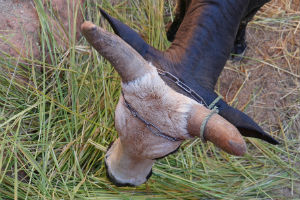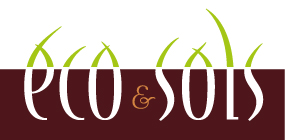 Recycling plant and animal biomass in livestock production systems
Recycling plant and animal biomass in livestock production systems
By the massive, generalised use of mineral fertilisers, the green revolution reduced the need to recycle organic waste and led to great specialisation of production systems and an increasingly marked separation between plant and livestock production. Synergies between plant and livestock production (by recycling agricultural sub-products, improving the quality of manure, etc) could significantly improve the efficiency of using biomass and reduce the losses and waste of nutrients in agroecosystems. The scarcity of fossil fuels and society’s demand for more environmentally friendly agricultural practices, with a growing population growth and increased food demand, could encourage more sustainable production systems, associating plant and livestock production
Aims
The general aim of the project is to ensure food security in family farming systems through research and by promoting innovative agroecological practices to optimise the management of biomass from plant and livestock production. In particular, it sets out to produce tools to characterise the composition and quality of biomass and soil fertility, to test and transfer innovative agroecological practices based on the principles of conservation agriculture to improve the conservation and recycling of biomass and nutrients within the farm, to create and organise a collaborative platform for discussion to improve communication between stakeholders. The IRD team is studying the use of infrared spectrometry to define and evaluate the quality of tropical soils in systems integrating plant and livestock production
Study sites
The study sites are :
- the central high plateau of Madagascar, in the uplands of Vakinankaratra, near Antsirabe
- south of Maputo, Mozambique.
Methodology
The project as a whole uses a wide range of methodologies. Eco&Sols is interested in particular in :
- using Mid Infrared Spectrometry (MIRS) and Near Infrared Spectrometry (NIRS) to characterise the components and physical and chemical properties of soils. Standard soil analysis methods require specialised equipment and highly qualified technicians using procedures that are often expensive. Spectrometry is less expensive and would increase the number of soil analyses that could be undertaken and give farmers a better understanding of the agrochemical properties of their land.
- quantifying the transfers of organic materials at plot or farm scale. The transfer of biomass within the farm (through food production, forage, spreading manure, etc) and exports from the farm (sale of agricultural products) affects fertility and can lead to soil acidification. These transfers are quantified to improve farm management.
Date
Décembre 2012- Décembre 2016
Partners
Malagasy research institutes
- FIFAMANOR
- LRI
- FOFIFA
- ESSA
Other partners
- DP SPAD
- ARP, La Réunion
- IIAM, Mozambique
- UEM, Mozambique
- CRA-W, Belgique
Publications
Fanjaniaina M.L., Ramahandry F., Larvy Delariviere J., Razafimanantsoa M.P., Salgado P., Tillard E., Rabeharisoa L., Becquer T. (2015) Transfert de fertilité et durabilité des systèmes de production : application à la culture du riz. Bulletin de l’Académie Nationale Malgache, 95(1), 163–168.
Contact
Pour Eco&Sols,






